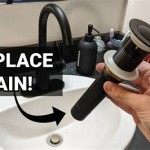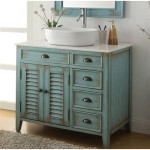Why Do Bathroom Sinks Clog?
Bathroom sinks, frequently utilized for a variety of hygiene-related tasks, are unfortunately prone to clogging. Understanding the underlying reasons behind these blockages is crucial for effective prevention and timely intervention. This article will explore the primary culprits responsible for bathroom sink clogs, providing insights into their formation and offering potential strategies for mitigation.
Hair Accumulation
One of the most pervasive causes of bathroom sink clogs is the accumulation of hair. Human hair, along with pet hair, is naturally drawn into the drain during activities such as shaving, brushing, and washing. Individual strands of hair might seem insignificant, but over time, they aggregate within the drainpipe. The rough texture of hair facilitates its entanglement, forming a dense mat that hinders water flow.
Furthermore, hair often acts as a binding agent, trapping other debris, such as soap scum, toothpaste residue, and small particles of dirt. This composite mass grows incrementally, gradually reducing the diameter of the drainpipe until a complete blockage occurs. The presence of hair accelerates the clogging process, transforming a minor inconvenience into a major plumbing problem.
The location of the clog often dictates the severity of the issue. Clogs occurring closer to the drain opening are typically easier to address, while those situated deeper within the plumbing system may necessitate more extensive intervention. Regular cleaning of the drain stopper to remove visible hair clumps is a preventative measure that helps to minimize the accumulation of hair within the pipes.
Specific hair types may contribute differently to clog formation. For instance, long hair strands are more likely to become entangled than short, fine hairs. The presence of chemical treatments on hair, such as dyes or perms, can also alter its texture, potentially increasing its tendency to cling to drainpipe surfaces. Understanding the specific characteristics of the hair entering the drain can inform targeted preventative strategies.
Beyond human hair, pet hair shed during washing or grooming within the bathroom sink also contributes to clogs. Pet hair, often characterized by its density and tendency to clump, can exacerbate the problem, particularly in households with multiple pets. Regular grooming practices designed to minimize shedding can indirectly reduce the amount of pet hair entering the drain system.
Soap Scum and Residue Buildup
Another significant contributor to bathroom sink clogs is the gradual accumulation of soap scum and residue. Soap scum is a byproduct of the chemical reaction between soap and hard water minerals, such as calcium and magnesium. When soap lathers in hard water, it forms an insoluble precipitate that adheres to surfaces, including the interior of drainpipes.
Over time, this soap scum builds up, creating a sticky, waxy coating that narrows the drainpipe and impedes water flow. The residue acts as a magnet for other debris, such as hair, dirt, and dead skin cells, further compounding the problem. The combination of soap scum and trapped debris forms a hardened mass that is difficult to dissolve or dislodge.
The type of soap used can influence the rate of soap scum formation. Traditional bar soaps, particularly those containing tallow or other animal fats, tend to produce more soap scum than liquid soaps or synthetic detergents. Switching to soap formulations that are less likely to react with hard water minerals can help to minimize soap scum buildup.
Hard water, characterized by its high mineral content, exacerbates the problem of soap scum accumulation. Households with hard water may experience more frequent and severe bathroom sink clogs due to the increased formation of soap scum. Installing a water softener can effectively reduce the mineral content of the water, thereby mitigating the formation of soap scum and extending the lifespan of plumbing systems.
The temperature of the water also plays a role in soap scum formation. Hot water encourages the dissolution of soap, but as the water cools, the soap scum solidifies and adheres to surfaces. Rinsing the sink and drain with hot water after each use can help to prevent soap scum from hardening and accumulating within the drainpipe. However, this is only a temporary solution, as the underlying cause of hard water remains.
Foreign Objects and Improper Disposal
The disposal of inappropriate items down the bathroom sink drain is another common cause of clogging. While bathroom sinks are designed to handle water and soap, they are not intended for the disposal of solid waste or materials that do not readily dissolve. The introduction of foreign objects into the drain system can lead to immediate or gradual blockages.
Cotton balls, cotton swabs, and facial wipes are frequently discarded into bathroom sinks, often with the misconception that they will easily break down in water. However, these materials are highly absorbent and tend to swell when wet, forming a dense, fibrous mass that obstructs water flow. Their texture also encourages the capture of other debris, accelerating the clogging process.
Similarly, toothpaste caps, small pieces of plastic packaging, and other non-biodegradable items should be avoided as drain disposals. These objects are virtually indestructible and will inevitably lodge within the drainpipe, creating a physical barrier to water flow. Their presence can also damage plumbing components, requiring costly repairs.
Even seemingly harmless items, such as medications, should not be flushed down the drain. Although they may not directly cause a physical clog, medications can contaminate the water supply and pose environmental risks. Proper disposal methods, such as returning unused medications to a pharmacy or utilizing medication take-back programs, should be followed.
Home improvement projects can also inadvertently contribute to bathroom sink clogs. Paint, drywall mud, and other construction materials should never be washed down the drain, as they can harden and solidify within the pipes, creating intractable blockages. These materials are best disposed of in accordance with local regulations for hazardous waste.
Children's toys, jewelry, and other small objects can also accidentally find their way into the bathroom sink drain. These items, often introduced during play or accidental drops, can cause immediate blockages that require professional plumbing assistance to remove. Supervising children's activities near the sink and ensuring that small objects are kept out of reach can help to prevent these types of clogs.
Ultimately, responsible disposal practices are essential for maintaining a clog-free bathroom sink. Adhering to the principle of only flushing water and water-soluble products down the drain will minimize the risk of blockages and extend the lifespan of the plumbing system. Educating all household members about proper disposal habits is crucial for long-term prevention.

Why Is Your Bathroom Sink Clogged Order A Plumber

Why Is My Sink Clogged Mike Diamond

Why Does My Bathroom Sink Clog

How To Unclog A Bathroom Sink Hana S Happy Home

5 Natural Ways To Unclog A Bathroom Sink Hiller How

Why Is Your Bathroom Sink Clogging

How To Unclog A Bathroom Sink The Home Depot

Bathroom Sink Clog Billy The Sunshine Plumber

How To Prevent Drain Clogs In Your Home Patrolplumbing

How To Unclog A Bathroom Sink The Home Depot
Related Posts







